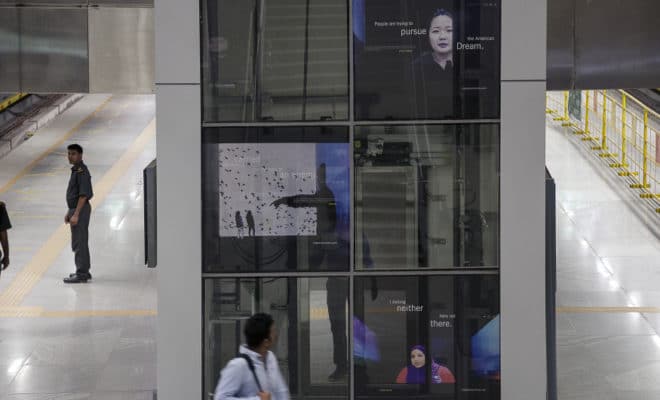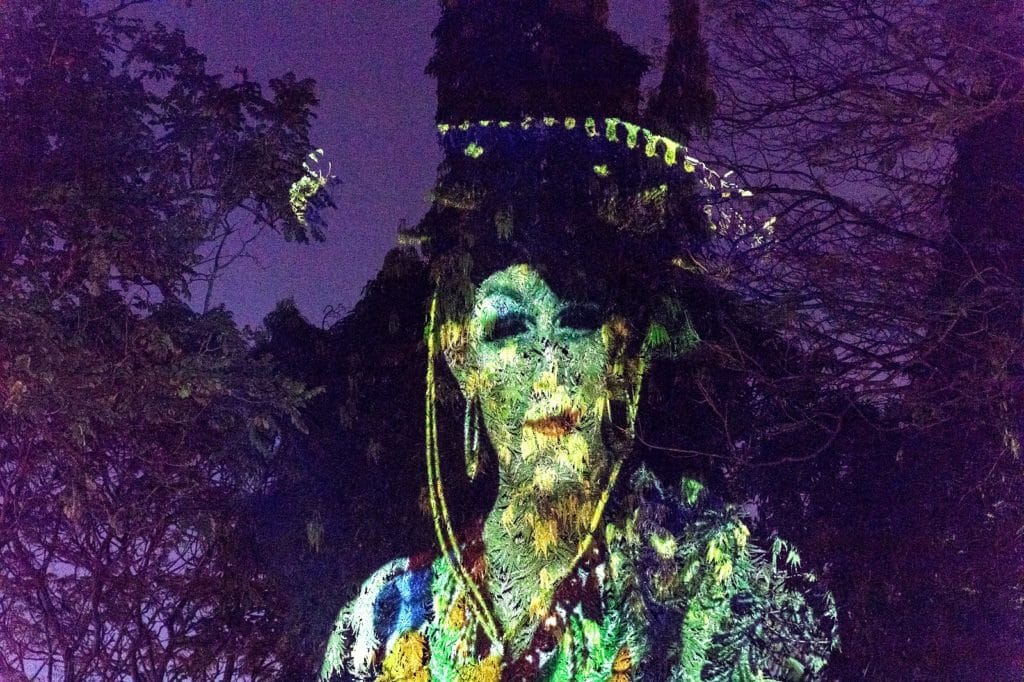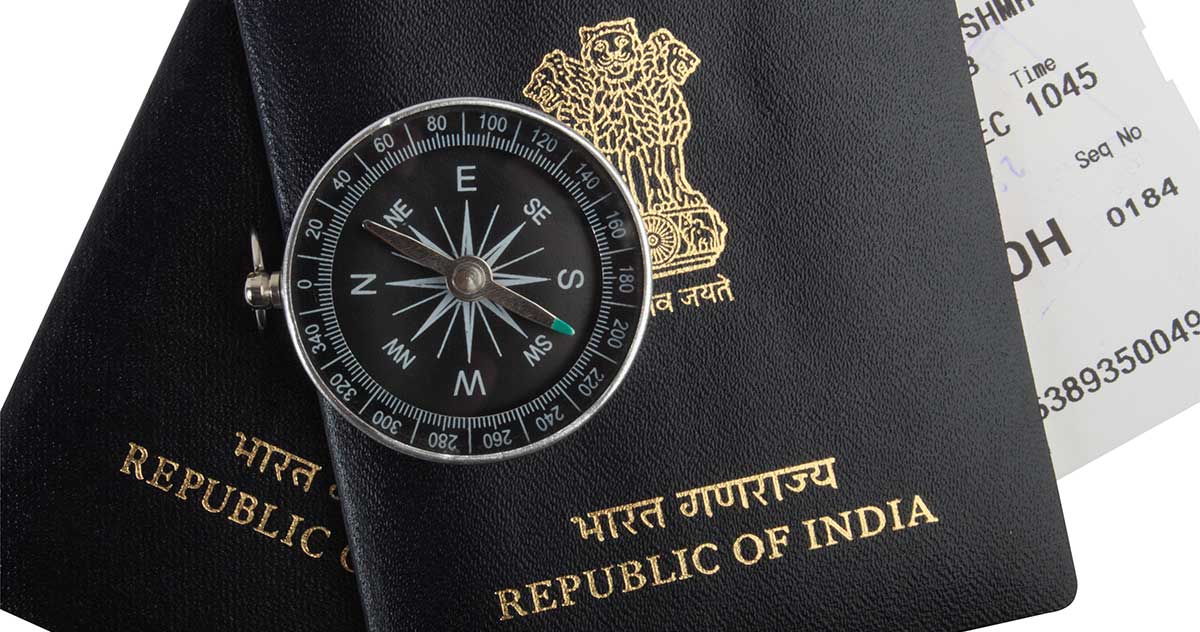Arts
Migratory Cultures: Personal Experiences Come Alive Through Public Art

Migratory Cultures video projection in Bengaluru
Artist-educators Robin Lasser and G. Craig Hobbs narrate immigration experiences of people from around the world through video projection mapping in their Migratory Cultures project.
An old banyan tree is becoming the screen for video stories this week at Panjim, Goa. The tree, which remains rooted, expands and branches out is an apt metaphor for the subject of the project — Migratory Cultures.
The video projection mapping project, conceived by artist-educators Robin Lasser and G. Craig Hobbs from San José State University seek to collect experiences of immigration from various regions and find avenues to project these stories in public spaces across the world.
“Migratory Cultures seeks to tell individual stories of migration, to give voice to the people who are migrating by sharing their stories with others as large-scale public art,” Hobbs tells Little India. “The work does not so much seek to achieve as it seeks to explore, learn and share in a process of cultural exchange across social and political boundaries.”
The project is now part of the Story of Space festival taking place at Panjim in Goa between Nov.10 and 19. The interdisciplinary event is bringing artists, educators, scientists and philosophers together on one platform, where they are showcasing their concept of space through their works.
Besides the banyan tree, another public space that Lasser and Hobbs have chosen to project these stories on is a lighthouse near the Kala Institute, Panjim. While the tree as the backdrop would give the story and the storyteller the kind of scale and importance that both professors felt they deserve, the lighthouse, they believe, is a beacon of hope and leads people to their destination.
Conflict of Identities
The Migratory Cultures project started two years ago when Lasser, Professor of Art at the San José State University, observed that almost half of the students in her class identified their place of origin to be outside the United States, as they were first or second-generation immigrants. These students hailed from countries such as Vietnam, Japan, Afghanistan and Germany. Although they would say that their art portrayed their identity, they no longer felt that their identity belonged to their countries of origin. Neither could they relate their identity to California.

Migration stories projected onto the trees at Menezes Braganza Garden in Goa.
Lasser realized that these students had begun to identify themselves with a third space and this was neither their country of origin, nor the place they resided in. Both she and Hobbs were deeply interested in capturing these wonderful stories of migration.
Awareness through public art
The two typically choose a public space such as a building, park, metro station or school as the projection site. Video interviews, animations and motion graphics associated with the topic are then generated to fit within the projection site.
“The process of video projection mapping involves working onsite to project 2D digital video imagery onto 3D structures,” elaborates Hobbs. “If we are conducting a workshop with students, we teach them the process of video projection mapping while also collaborating with them to generate content. They also work with us to collect stories of migration by recording interviews, editing and translating them.”
All of this then comes together in the form of a large-scale video projection. It is shared with viewers who get to hear and see stories of migration from around the world. The work brings stories of various people together in myriad forms. They could be storytellers, collaborators, content creators, engaged viewers or participants.
“The goal of Migratory Cultures is to record and share stories of migration as public artworks, large scale video projections mapped onto buildings and trees in locations throughout the world,” Hobbs says about the project. Some of the stories of the project have earlier been displayed at the Cubbon Park Metro Station and the National Gallery of Modern Art in Bengaluru.
Migratory stories from around the world
The current stories have so far been woven from over 15 countries. In Goa, Lasser is also working with two transsexuals who have migrated to the place because they feel they can be themselves there. These stories are included among six other stories from Goa. They have been mixed and contrasted with the 15 stories from across the world. “Migration in India is often internal and appears to be motivated more by people searching for better opportunities and work,” she adds. On the other hand, she found that migration among her students in the United States, especially those from Vietnam, was based more on trauma, stemming from the horrific situations they faced in the strife-stricken country.
1. Migratory Cultures – India from Robin Lasser on Vimeo.
She also compares the situation that transsexuals face in the United States to the unique position they occupy in the Indian society. In America, they have relatively ordinary lives. However, in India, (even though there is a patron deity of the Hijra community called Bahuchara Mata) transsexuals are often social pariahs. They are also sometimes associated with Ardhanarishwara, the androgynous composite of Shiva and Parvati who is half male and half female. While blessings of the Hijras are sought at births and weddings, they are ostracised in everyday life and have trouble getting an education and jobs.
The individuals Lasser is working with in Goa have strong political views, a result perhaps of the turbulent lives they have led, including the trauma of being given away by their parents, and experiencing sexual, emotional, mental and physical abuse. What she finds amazing is the strength they carry despite all the odds. And that’s a theme that would certainly not be uncommon through Migratory Cultures.


